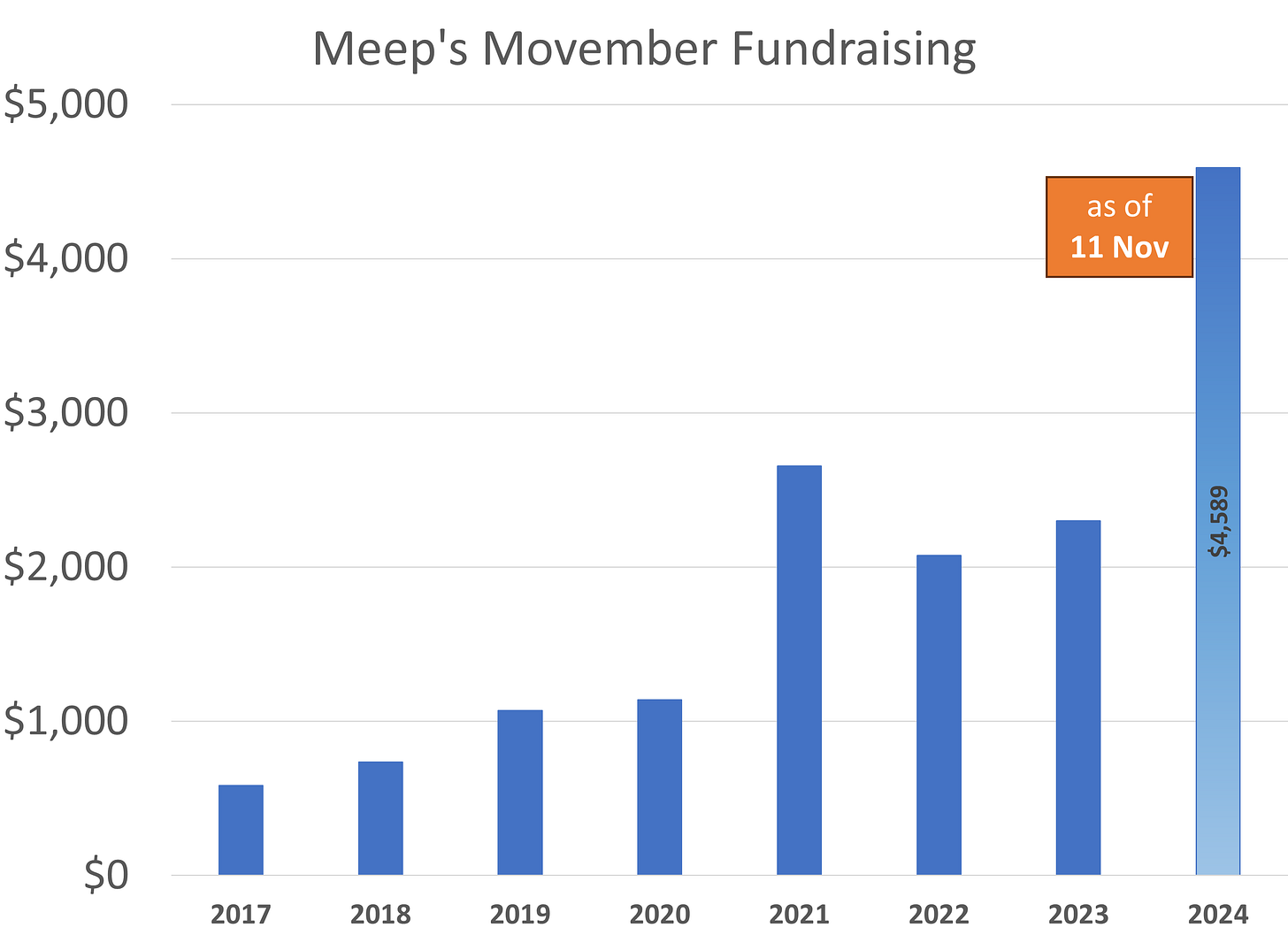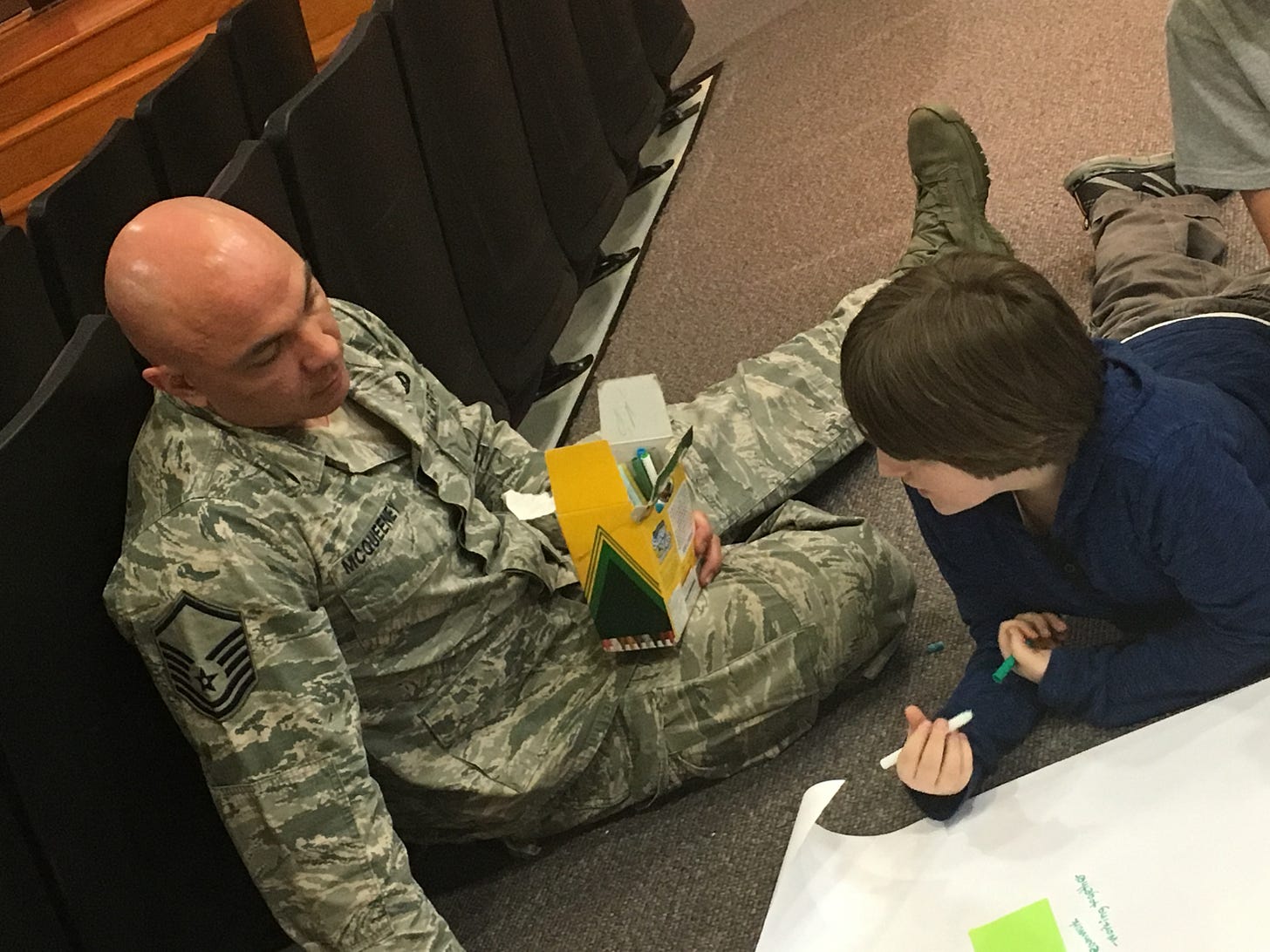First, a Movember 2024 fundraising update. As I have been asking for donations to Movember in the memory of late husband Stuart (the STU of STUMP), I have blown past prior year's fundraising:
Thanks to the 45 donors I’ve had!
Here are the places you can donate to the Movember Foundation, which supports men’s health, specifically focusing on prostate cancer, testicular cancer, and men’s mental health:
Mary Pat Campbell’s MoSpace – a place to donate at Movember itself
My Movember Facebook fundraiser – my officially linked fundraiser, if this works better for you
And here’s a QR code if that works better for you:
Supporting Mental Well-Being for Veterans
Before going heavy, let us look at the positive side.
Movember Foundation has some programs that specifically target veterans groups with respect to mental health, such as Making Connections for Mental Health and Wellbeing Among Men and Boys. One of their programs ran in Canton, CT:
Resilience Grows Here
Resilience Grows Here (RGH) is a veteran-focused mental health initiative of the Farmington Valley Health District. The program engages veterans, their families, and members of the broader community in efforts to prevent suicide among veterans by reducing veterans’ isolation, destigmatizing mental illness, building resilience in boys and men, and creating safe spaces for veterans to connect with each other.
It looks like this program ran from 2016 to 2022 (the websites for the program are now defunct.)
The VA also has resources, but we will see how effective they have been. I see this strategy document: National Strategy for Preventing Veteran Suicide, 2018-2028, which was published in 2018.
This document has the following graphs:
Look at the graph on the right, where suicide rates are highest for the youngest veterans. Many people may think that this is what suicide death rates look like in the general population, but this is not so:
Things to note: the rates are highest for the oldest age groups, and the rates dip a little bit around traditional retirement ages. I will write a little more about this in future posts, because this is really a blending of the female and male curves.
But note the rates are about 20 per 100,000 people per year. That’s for the general population.
Then look at the suicide rate for veterans aged 18-39. That’s higher than 50. Now some of that can be due to veterans being more male in percentage, and males having much higher suicide rates than females.
So let’s use the VA’s data, from the 2023 National Veteran Suicide Prevention Annual Report. The data are from the appendix.
Male Veteran Death Rates by Suicide vs. General Male Population
For the following, I am focusing solely on the male veterans, for a few reasons.
First, I’m focusing on men’s mental health issues for Movember.
But also, there are far fewer female veterans at older ages to make proper comparisons for suicide rates at older ages. The VA had to use larger age groupings for the female veterans, and female veterans had a much lower death rate due to suicide than male veterans.
But, also, as you will see, the suicide problem is a serious crisis for younger male veterans, even compared to the general population:
This has been a serious problem in the general population, and it’s even worse in the younger veteran population.
As we move into the next higher age group, it’s still a problem:
The rates aren’t as high, and the trend is not as pronounced, to be sure. But these rates are still high.
It gets murkier at older ages, probably because many of the oldest veterans may have been drafted, as opposed to volunteers:
Even if there is not much difference between veteran and general population suicide rates, the trend overall, of increasing suicide rates, are still horrible and needs to be addressed.
Finally, the oldest age group:
At the oldest age group, the relationship flips, with veterans having lower suicide death rates compared to the general population. The trend is also more “sideways” compared to the younger age groups.
The real crisis can be in the youngest age group of veterans, which has not only the highest death rates due to suicide, but also the largest growth rates. Though the numbers are lower on the female side, there are indications of crisis there as well, especially through the pandemic.
So as we remember veterans on this day, let us recall some of the more silent ways veterans may be suffering. One reason I support Movember is the attempt to improve men’s mental health outcomes, of which veteran mental health is just a part.












